24 January '23
The 2022 World Cup finalists
/
Breeders Portrait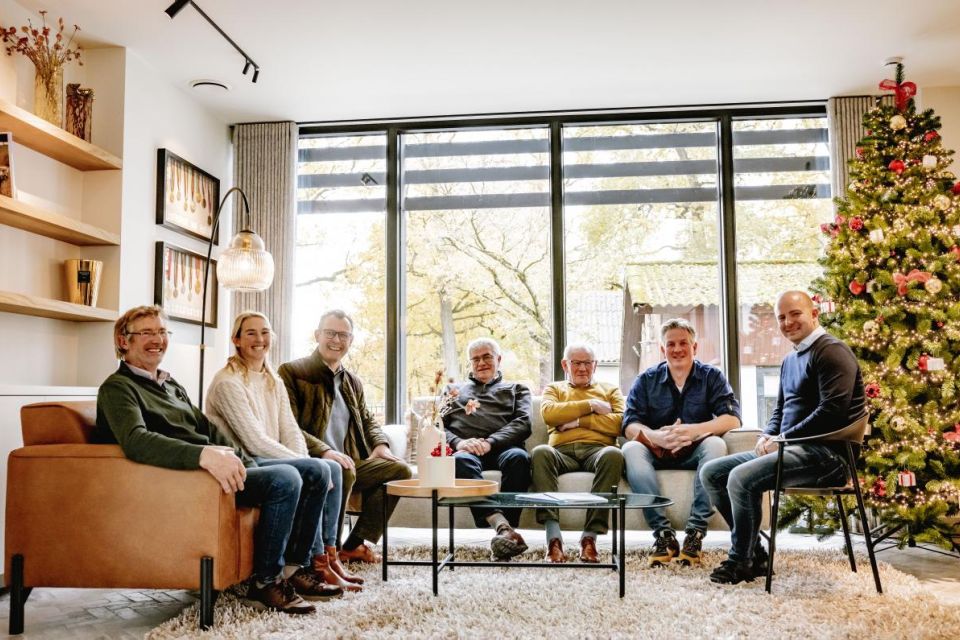
Zangersheide
The 2022 World Cup finalists
This year, 20 young Z horses jumped the World Cup finals. Z Magazine invited the successful breeders to Lanaken and learned that success is also just the tip of the iceberg with an unknown mass underneath. Our breeders are rightly proud and proud, but above all they are realistic and talk openly and honestly about their road to success and the many setbacks along the way. They are not afraid to admit that they have also been lucky. Or readily admit that their progenitor was a lucky accident. We also learn that everyone breeds from their background. For example, Luc Henry breeds for the top, but is not a rider. Rozelien De Beck of the Withoeve is a breeder, but also a rider and mom and does not dare to breed the sharp horses that Luc Henry and Emile Van Rossem prefer. Emile's sons like to ride and to keep motivating them he has to provide good horses. Not thinking of stopping yet, the retired breeder from Klapscheut, Emile has 5 grandchildren who are also bitten by the horses. Now he also breeds for them and so everyone has his story....
Kris Van Loo
Who is who?
Wim Luyten is 81 and brought his son. They are the breeder of the five-year-old Don Juan Z (Dominator 2000 Z) with whom Jarno van Erp jumped the final. 'Don Juan Z dropped one bar in the jump off, although we were especially super satisfied that he made it to the final and the jump-off. That was already amazing because three months earlier Don Juan Z was still jumping over only one meter. So it went fast.
No medal for Don Juan Z, but it was for his rider Jarno van Erp. He won bronze with Mindset ES, a son of Aganix du Seigneur Z, bred and owned by Egbert Schep.
From Denmark came Philip Wendelboe of stud Alfarvad who had a finalist for the first time at the WC: D'Artagnan Alfarvad Z (Dominator 2000 Z). Philip is the third generation of Alfarvad that houses about 50 horses, half of them under saddle. The Danish stud came to the World Cup with three horses. 'My grandfather already came to the first edition of the WC. He initially bred within the Danish Warmblood Horse. Like all other studbooks at the time, the DWP was very protectionist. My grandfather believed more in the vision of Léon Melchior. When he founded his studbook, he immediately joined. We are completely Z oriented, we often choose Z stallions, come to the Z Tour in April and to the WC in September.'
In the seven-year-olds, European champion Thibeau Spits jumped the final with Carlo van Klapscheut Z (Carlow van de Helle) and then we are at Mivaro, the breeding farm of Emile Van Rossem & Sons. 'We breed about eight horses from the same lineage every year. We have already been very lucky. The past 5 years we had as many finalists. In 2017 we even had a world champion with the seven-year-old Koriano van Klapscheut (Lord Z). Koriano is a son of Coriana van Klapscheut who we know at 5* level with Eric Lamaze and Pilar Cordon. My sons train our horses until they are 7 years old. They both work, breeding and horses are a hobby.'
Klapscheut's foundation dam is 25-year-old Uriana van Klapscheut, a daughter of Heartbreaker out of Elandra (Joli Coeur x Vayrac). 'Not only Carlo, also my son Steven jumped the final this WC, with the six-year-old Quana van Klapscheut (Iron Man van de Padenborre), a daughter of Uriana.
Luc Henry rang a bell with the breeders present. Your face looks familiar, it sounded in chorus. Luc Henry is a familiar name, it turns out. 'My two grandfathers were involved with horses. One was a passionate breeder, the other an international judge. I was 9 years old when I went to the World Cup in Aachen with my grandfather in 1987. And I still remember my first visit to Zangersheide some 46 years ago. I came to Zangersheide then with my grandfather to have his mare covered by Almé Z. It says something about my passion for horses and breeding. From an early age, I wanted to breed the best horses in the world. In doing so, I follow my intuition and never follow fashion. Dourkhan Hero Z is an example of that, born to a then unknown young sire (Don't Touch Tiji Hero) and unknown young dam (Zinka de Kalvarie Z, Zandor Z x Calvaro Z). Two years ago I sold 90% of my breeding and now I still have two foals in co-ownership.
Don't you miss it, breeders want to know? Especially when your horse becomes vice world champion?
Luc Henry: Surely not, I mainly look at the World Championship with gratitude. In the end, I am only at the beginning of the chain and later observe the result. Breeding is not an addiction where I always want more.
Rozelien De Beck brought along her father Willy. They are the driving force behind De Withoeve and had a finalist in the six-year-olds with CSI van de Withoeve (Comilfo Plus Z). When Rozelien explains that De Withoeve is primarily a horse dairy, Philip from Alfarvad asks if he understood that correctly. In Denmark, they don't know that. 'Originally De Withoeve was a dairy cow farm. The economic evolution forced us to switch and we became a horse dairy, because there were already a dozen foals born every year. At one point we were milking about 40 mares. Initially ponies, I got older and the ponies gave way to horses. During that period, we started breeding selectively in function of the sport.' It becomes clear pretty quickly that dad Willy is the logistics manager and Rozelien takes care of the breeding selection. She also trains their horses. I know my place, Willy notes delicately. Rozelien: "We need about 20 foals a year for our dairy. And I don't like to sell them, I prefer to see them grow up. At the age of 2 we do make a first selection, most are sold between their 4 and 6 years.
'What they show as foals comes back later as horses'
Statistics tell us that World Cup finalists have a high chance of an international career. When did breeders know their foal would make it?
Rozelien: CSI van de Withoeve was a very special colt. In our area they speak of a criminal foal, hence the name CSI, referring to the series. When the foals are 4 months old, we let them jump a small obstacle with the mother. In a relaxed atmosphere, just to get an impression. You don't always get one, CSI blew us away. His attitude, guts, daring, technique. He stood out in every way. And he confirmed that image as a two-year-old. What they show as a foal comes back later as a horse. As a breeder you are curious about your foal and want to get an indication already, right?
Wim: We only let them jump as two-year-olds. We are a combined breeding farm of jumping and dressage foals and breed about four foals a year.
Philip: we don't let them jump as foals either, we only start me when they are two or three years old. We don't judge before they come under saddle. We then sell between 4 and 6 years old and then you don't always make the right decision. Sometimes you sell too early, sometimes too late. We always give our horses a chance to show themselves and some horses show themselves faster than others.
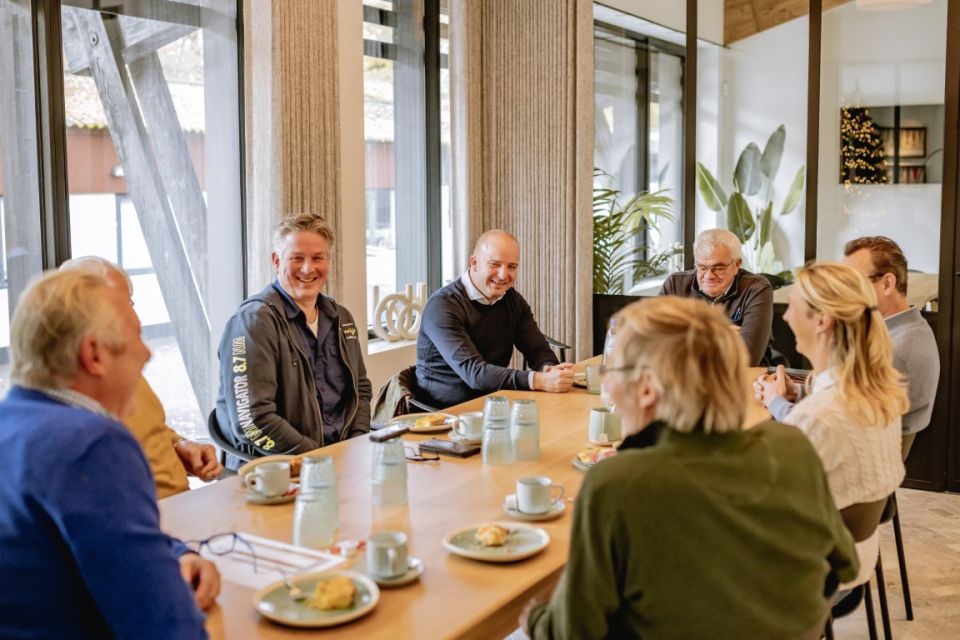
Philip: 'We don't judge before they come under saddle'
Emile: Our foals are not systematically collected for jumping. If we think we have a special foal, of course we are curious and we let it walk with the mother once in the indoor arena and we set a hurdle. We select strictly on our line, we are already breeding with the fifth generation and then you want to see the traits and characteristics of the maternal line back. You're looking for confirmation. That's beautiful, isn't it? When they are born, you invariably think they are all going to be good ones. Which, of course, is not true (laughs).
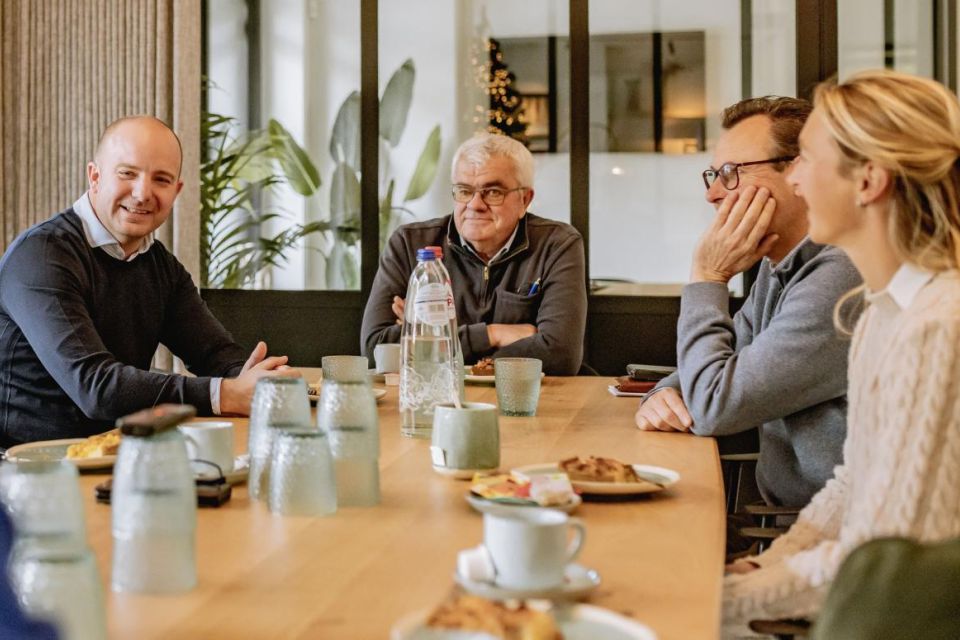
Emile: 'When they're born, you invariably think they're all going to be good ones. Which of course is not true (laughs)'
Luc: Your first impression rarely matches reality. I brought my foals together in the indoor arena where I put some cavaletti. I then mainly observed their behavior. How relaxed do they handle a jump? How do they look and approach a cavaletti? The way they jump as foals, you see later when they are horses. That says nothing about how well or how high they will jump. The physical aspect is as important as the psychological aspect. The physical way of jumping remains unchanged. You can't judge the mental aspect yet. You can rely on the mentality of the father and the mother, but what and how much did the foal get from whom
Wim: There are pros and cons of letting foals jump. The most important thing is that it happens in peace and relaxation.
Luc: totally agree. You want to see reality, don't you? That's like with two-year-olds they let them free jump in shock. Then you see show and spectacle, but no truth. You have to stay close to nature.
'A mare can never have too much blood and character'
How was the foal put together and what criteria were used?
Wim: To begin with, Don Juan Z comes from a fine dam, Zitha (Fuego du Prelet x Narcos II x Le Mexico). A big mother who gave a big foal. We bought Zitha as a broodmare. Her first foal was by Contendro and was sold to Russia as a dressage horse. Her second foal is Don Juan Z, from one of the first crop of Dominator. I saw him and had to have him. His model appealed to me enormously and we had seen him jump and that also stood out. We were looking for a stallion with a lot of scope. The stud fee back then was 1,000€. I don't know how much Dominator is asking now, we certainly made a bargain (laughs). And it worked out well. As a two-and-a-half-year-old, we presented him at the Z inspection, but he was too green. We didn't have to come back the second day. A correct decision by the judges. A young rider then trained him, but Don Juan Z, like his father, became very imposing and strong and then he went to Jarno van Erp, who is now also half owner. It took a while for the penny to drop for Don Juan and luckily that penny dropped just before the WC.
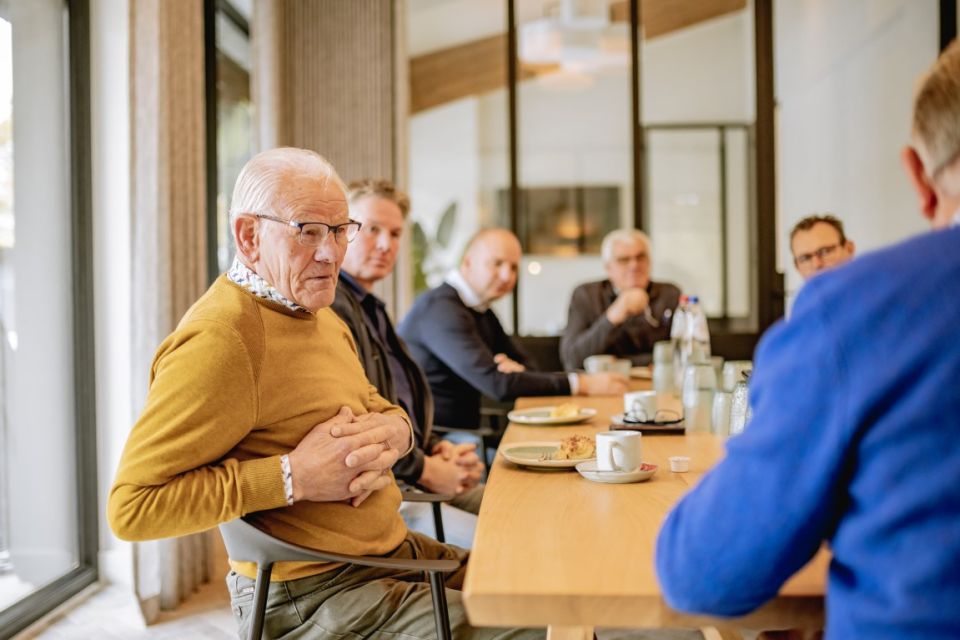
Wim: 'It did take a while for the penny to drop with Don Juan Z and fortunately that penny dropped just before the World Cup'
Philip: The mother of D'Artagnan is Cameron Alfarvad Z (Crown Z x Calido I) who hurt herself and therefore became a broodmare. D'Artagnan is her first foal. We were looking for a high-performance stallion with size and pretty quickly ended up with Dominator. To be honest, no hours of searching preceded that. D'Artagnan was a remarkably large foal and became a big horse. That did play tricks on him as a youngster. His legs went all over the place like a lurcher. In addition, in Denmark you mainly jump in small tracks and that did not play in his favor. He struggled in the beginning and yet as a four-year-old he jumped the final of the Danish championships. There was a lot of demand for him, but we didn't sell. Fortunately, otherwise we would have experienced the World Championship differently. Afterwards he got a rest, in February we start preparing for the next World Championships (smiles).
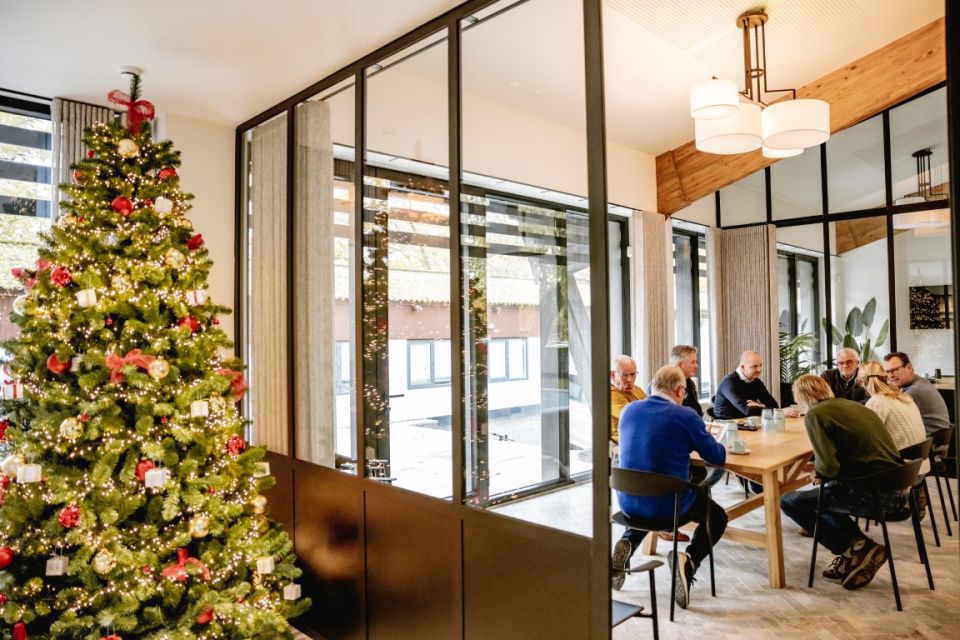
Philip: 'D'Artagnan was a remarkably big colt and became a big horse. His legs went in all directions like a lurcher'
Emile: Carlo was born big, by Carlow van de Helle (Caretino x Corofino I) out of Koriana van Klapscheut and she is a daughter of Cicero Z van Paemel x Darco. Koriana was a small blood mare with a lot of technique. I also have a Dominator out of her, because she needs a stallion with a lot of ability and a good character. Carlo is by Carlow for the same reason and I was proven right (laughs). In my opinion, a mare can never have too much blood and character. Although I also have some mares that are too sharp. How we choose stallions? You don't want to hear our discussions at the kitchen table. That's why I have a system. My two sons each make a list of stallions and they put it on the table. I have my list and they are not allowed to see it. If one of their stallions matches my list, the choice is made. And if my sons don't match, I cut the knot and then I often choose something completely different. Unlike my sons, I easily dare to choose a young stallion.
Carlo has also been to the Z inspection. At first that went well, until the presentation was done and Carlo understood that he had to jump one more time. There was an uproar, Carlo jumped the oxer in reverse and fell in. We both stepped out of the arena shaking on our legs. The judges allowed us to come back the next day, Carlo again came into the ring shivering and I immediately went outside with him. We thought he was good enough to present, it turned out differently. No big deal, after all we are not stallion farmers. For us, a stallion means trouble. We are ordinary breeders and stallions do not fit into that picture. We would shortchange those because we are not equipped for that. Carlo was castrated and my son trained him. Big dealers showed a lot of interest. I usually keep them until they are 7 years old and that is how it went with Carlo. He is now half of the Spits family. We already had an agreement in August and now it's official, I billed Carlo on October 1 (laughs). My children like to ride and to motivate them it is important that they have good horses. And that in turn is my motivation to breed good horses. And I already have 5 grandchildren who are also interested. I am already breeding for them.
Luc: I bred Dourkhan Hero Z out of a mother and father that I also bred. Mother Zinka (Zandor Z) I sold as a foal to Karel Geens of Stal De Kalvarie. With the condition that later I got two more foals out of her. Her first foal was by Don't Touch Tiji Hero. That he is a son of Diamant de Semilly is to the credit of Tim Van Tricht of Tiji Stables because I was not a fan of Diamant. Tim made the right choice. Dourkhan Hero Z was running in the pasture with about 25 other foals when I got a visit from Paul Van Den Bosch of the Berghoeve. He was looking for some broodmares and fillies and his eye fell on Dourkhan, who I sold for half. Dourkhan moved to Paul. At that time I had about 250 horses and had completely forgotten about Dourkhan. Until Paul called me asking if we would introduce him at the Z stallion show. Which stallion? Dourkhan and after the first day he was already sold to Zangersheide.
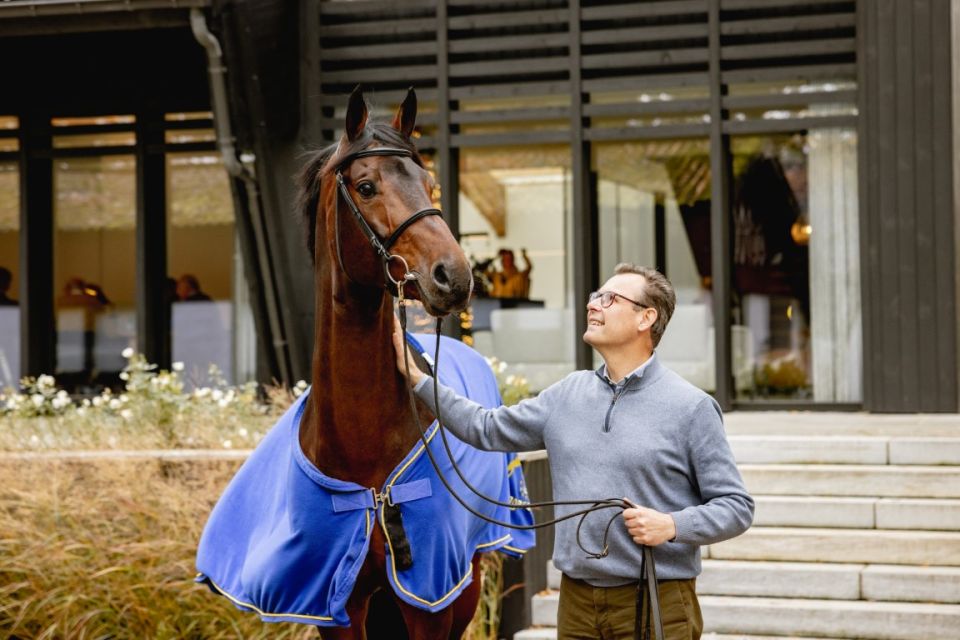
Luc: 'I had around 250 horses at the time and had completely forgotten about Dourkhan Hero Z'
Rozelien: I always look for a name that fits the personality of the foal and therefore am always late to register it. 'CSI' fits it perfectly: Crime Scene Investigation, because it was a gangster foal. Mother Calinka (Kashmir vh Schuttershof x Romeo) we bought as a broodmare for milking. She was 11 years old at the time. There is no significant pedigree behind her. We knew very little about her. Afterwards we learned that she was once stolen. CSI is her first foal. Sire Comilfo Plus Z I had seen at the stallion approval in Westphalia and there I already thought he was phenomenal. Later I saw him during the presentation of the Z stallions in Lanaken and my choice was made. CSI was a little fine poppet at his birth. We presented it at the Z Festival, but he didn't stand out there. We jumped him once at home and fell over backwards. A French customer came by, saw CSI and bought him immediately. Asking if he could stay with us in the rearing. At 3 years old, she asked if I would saddle him. I do that a lot, but I also have two kids and I didn't want to start with CSI. I knew a girl who specialized in it and brought him to her. Two months later she was still not in the saddle. CSI then went to his owner in France. There it didn't work out either and a few months later he was here again. Finally Stefaan De Vos saddled him, after which he went back to France. There he was allowed to recover in the meadow. Mike Van Haudt became his rider and he said he needed another 3 months to get back on. Now he can do everything with it, but it took a long time to gain his confidence. And now look, CSI and Mike became vice Belgian champions in Gesves this year. There he was sold to the Geurts family.
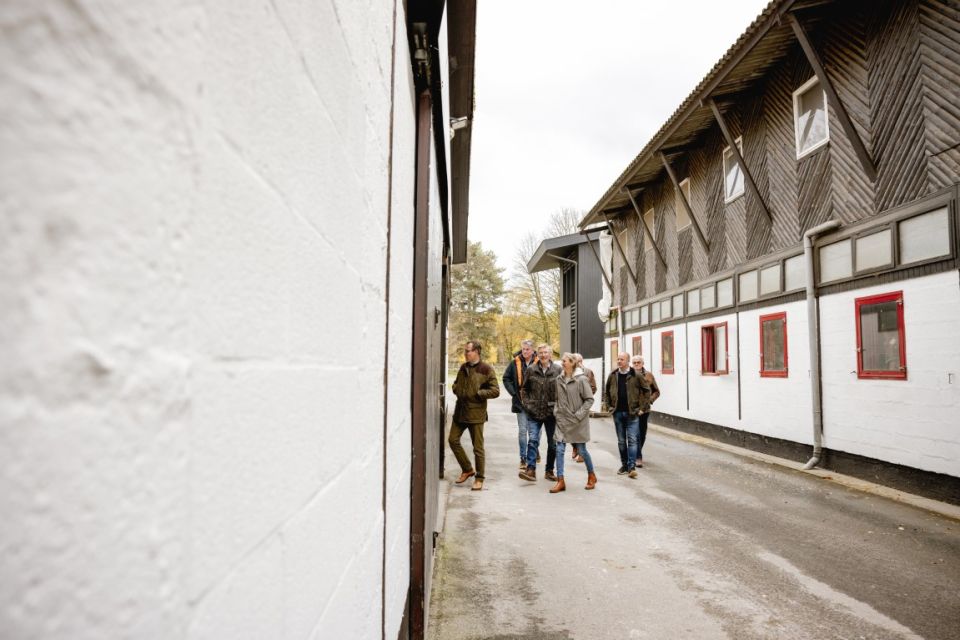
Rozelien: 'CSI was a little fine poppet when he was born. We presented it at the Z Festival, but he didn't stand out there'
'A strong character is often associated with a bad character'
It stands out that our finalists have character and personality. Is that a prerequisite for success?
Rozelien: the unfortunate thing is that a strong character is often associated with a bad character.
Luc: I see it differently, horses are sensible. If they are so-called difficult, it is a consequence of their sensitivity. And sensibility is a condition for what we describe in a horse as caution. And to jump faultlessly you have to be careful. When, thanks to their sensitivity, they are also cool, they can become top jumpers.
Wim: the question is also why that one rider gets the confidence and the 10 previous ones, say, didn't see anything in it. De Sjiem was not the easiest, Jeroen Dubbeldam did become Olympic champion with it.
Emile: In that sense, people are no different from horses. Characters clash or click.
Coriana won 1.60m classes but you couldn't ride her in the arena. Getting on you did in the ring. Many of her children are just the same and I recognize that from when they are foals. In my breeding I prefer mothers with a strong character. Sometimes too strong but their children make the difference later.
'You still need a factor of luck to make the final'
It is easy to ask the question to the finalists, but how important do they think the result is?
Wim: I think that's important anyway. Don Juan Z showed what he has to offer. He showed quality and mentality, scope and character. For me he is going to 1.60m. No idea if that will ever happen, no one can tell, but I want to see it.
Philip: when you come back to Denmark with a World Cup finalist, it is very highly regarded. In that sense it is important for our breeding.
Emile: At the WC you can compare your horses with peers. For me, that's the main thing. Because you still need a factor of luck to make the final.
Luc: At best you get confirmation as a breeder at the WC and as Emile says, you also need luck in the final and jump-off. When it comes specifically to Dourkhan, you can't deny the influence of Christian Ahlmann either. The rider also plays an important role. In the six-year-olds, Freeman Heureka Z (For Pleasure) also rode along from my breeding farm. It went well until the jump-off and then you saw the inexperience of the rider. That is absolutely no reproach. It just shows how important the rider is. You always put down a result with two.
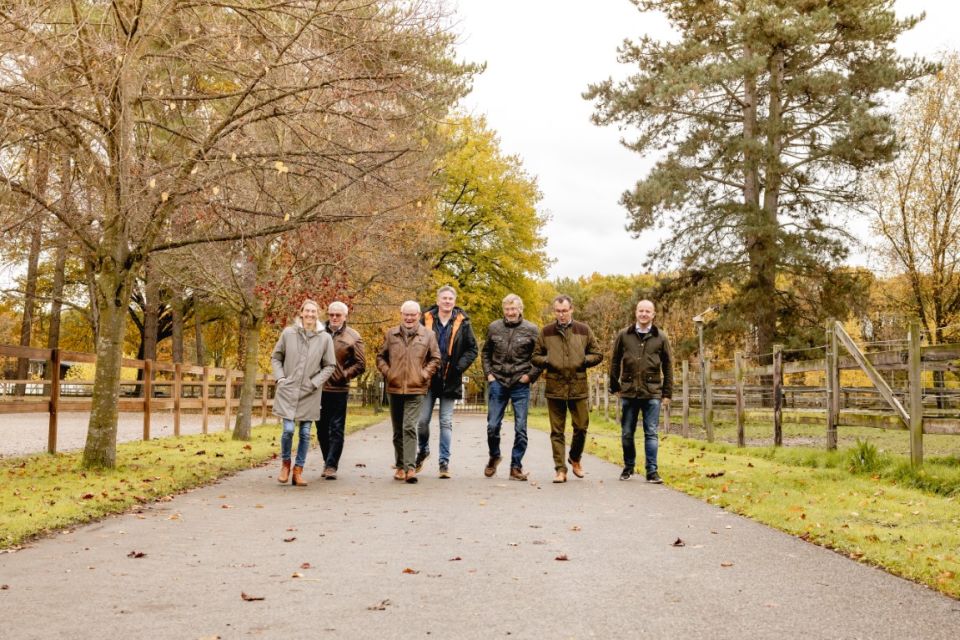
Luc: 'A result always puts you down by two'
'Keep in mind that you lose at 30%, with 30% you get out of expenses and with the remaining 30% you win. And if you are lucky the last 10% provides the jackpot.'Our breeders enjoyed the World Cup result, although they are also realistic. They testify about their successes and setbacks. Because there are undeniably those. And can a breeder still survive anno 2022?
Rozelien: difficult! Top foals and ditto horses will always be good in the market. But we should not be blinded by that. Not everything you breed will be a success and no breeder is an exception to that.
Emilie: it's not because you sell one foal or horse well that you are farming well.
Rozelien: if you breed 10 foals, there are already 3 that get a failing grade on the medical examination. With the rest, there are going to be some that don't live up to expectations. We have the advantage of raising and driving our foals ourselves. And we produce our own hay and straw. That saves on the settlement. For us, breeding is a passion and not a detailed accounting balance sheet. At a rough estimate, a foal costs 3,000€ at birth. Then we are talking about natural gestation with a young stallion. For an ET foal, you can do that price times 3. A yearling in rearing costs 1,000€, a two-year-old 1,500€, a three-year-old 2,000€. Believe me, you don't sell every three-year-old for cost.
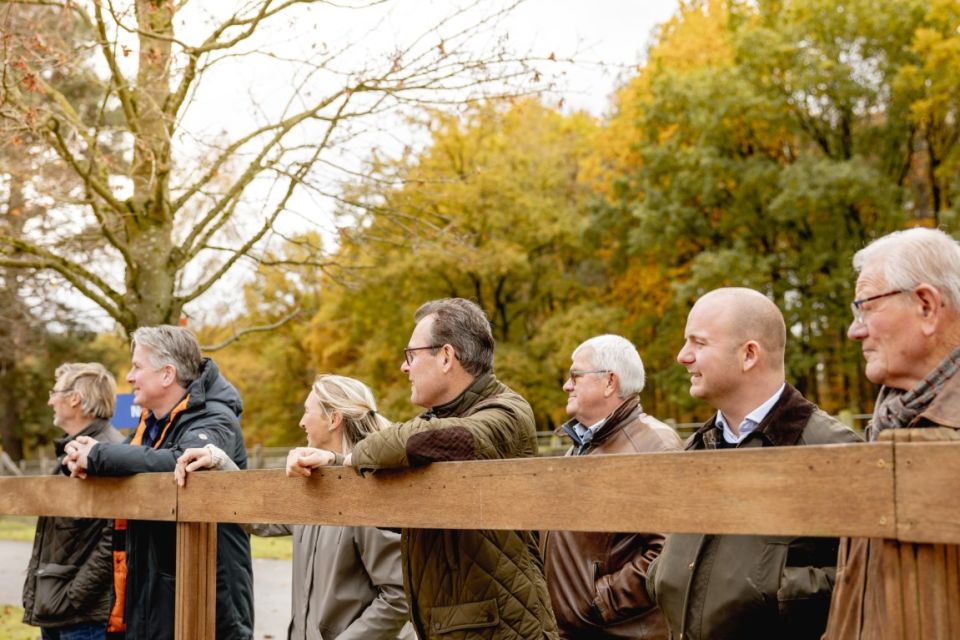
Rozelien: 'For us, breeding is a passion and not a detailed accounting balance sheet'
Wim: breeding is a hobby and costs us money. And indeed you have to be lucky because we all have setbacks. We have a very good dressage mare who is currently in the clinic with colic. If like us you only have a few mares, such a loss weighs heavily. What I do notice is that it becomes more and more difficult as a small breeder, because the bar is being raised higher and higher.
Luc: Quality is always paid for. That should be your approach as a breeder. Breed to the top and you will be rewarded for it. And we are breeding better and better, the average level has risen significantly in recent years. Never before have so many horses jumped 1.40m-1.50m internationally.
That striving for the top is accompanied by a lot of setbacks. That is inherent in breeding. Keep in mind that you lose at 30%, with 30% you get out of expenses and with the other 30% you win. And if you're lucky, the last 10% provides the jackpot.
And when it comes to selling, you never know in advance if you are making the right decision. I bred Bogeno (Baloubet du Rouet) who had an international 5* career with Doda De Miranda Neto. Bogeno did not meet any expectations as a foal. I sold him at a year and a half for less than the stud fee which was 2,000€.
Emile: I'm 67 and retired (laughs). Klapscheut still exists today thanks to one mare: Uriana (Heartbreaker). To diversify the breeding I bought other studs afterwards, none did better than Uriana. I said goodbye to the others. That too is breeding: investing and if it doesn't turn out well, taking a loss because you have to dare to select strictly. That is part of breeding. When I started I had 30 horses after 10 years. Either you are bankrupt or you have won the lotto. Fortunately, I won the lotto. I see it as simple as that. And I'm serious about the lotto.
I bred my first horse in 1974. By Cidre de Bouché, at that time a progressive stallion. I was breeding for my own use. Or call it abuse (laughs). I came as a blacksmith to a customer and there was a yearling, by Gibramino. She looked like hell and was totally neglected. I'm talking about more than 35 years ago. I knew the strain of that yearling and bought her. Her first foal, by Lys de Darmen, was an instant hit. Patrice Delaveau rode her internationally. His name was Mistral van Klapscheut. Her next two foals died. I wanted more from that line and after a long search, there was no internet yet, I found a mare from that line, by Joli Coeur. She was standing in West Flanders. Those owners didn't want to sell at first. I called them every three months for two years and finally I was able to buy her. For too much money, but soit. I had them covered and her first foal did not come off. A difficult delivery, so much so that I feared for the mare. She made it, her foal did not.
I subsequently had her covered by Lys de Darmen, because I had already had success with that. And out came a filly. I was overjoyed! The next year she is pregnant again. One morning I don't see her head coming out of the stall. I go to look and she is lying dead, aortic rupture. Fortunately, I still had her filly, Uriana. A few years later she jumps the cycle and there everyone tells me she couldn't possibly be a Lys de Gut. I began to have such doubts that I had her DNA tested. And indeed, it was not a Lys de Darmen but a Heartbreaker. I was satisfied with my mare, even though she was not who I wanted. We settled amicably with the stallion owner and got a free stud by Toulon as compensation (laughs). In retrospect, that blood of Heartbreaker has been my great good fortune. Her first three foals were mares and the train was off. We had a lot of misfortune, but very accidentally also won the lotto.
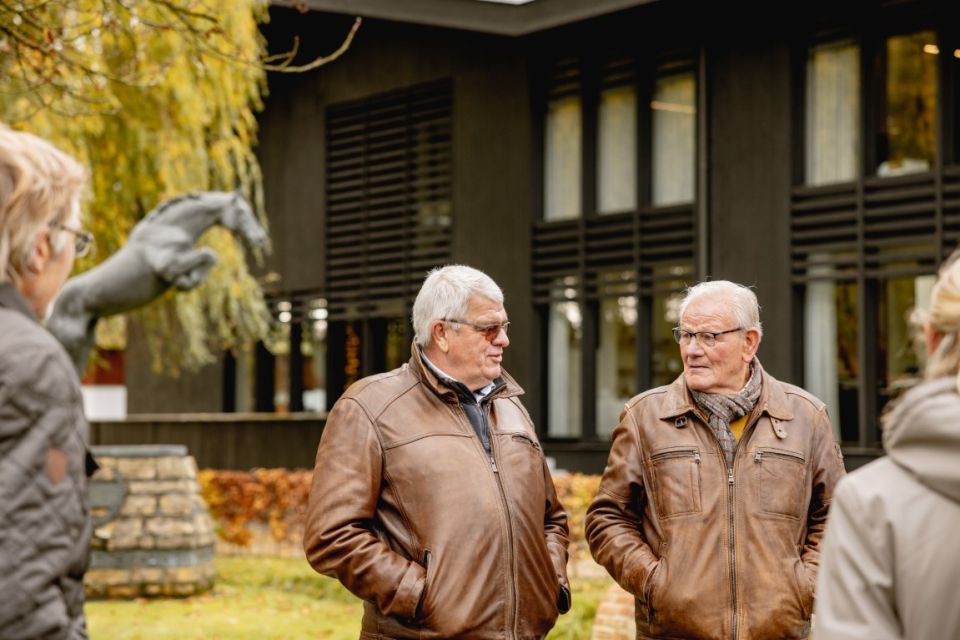
Emile: 'breeding is investing and if it doesn't turn out well you have to take a loss because you have to dare to make a strict selection'.
Luc: I think that's a great example of how breeding really works. Emile may have been lucky, but he also consistently believed in his foundation dam and that persistence was rewarded.
You have to be honest with yourself in life and that applies to your breeding as well. Many breeders dream and delude themselves when it comes to the quality of their breeding. They hope and see things that are not there.
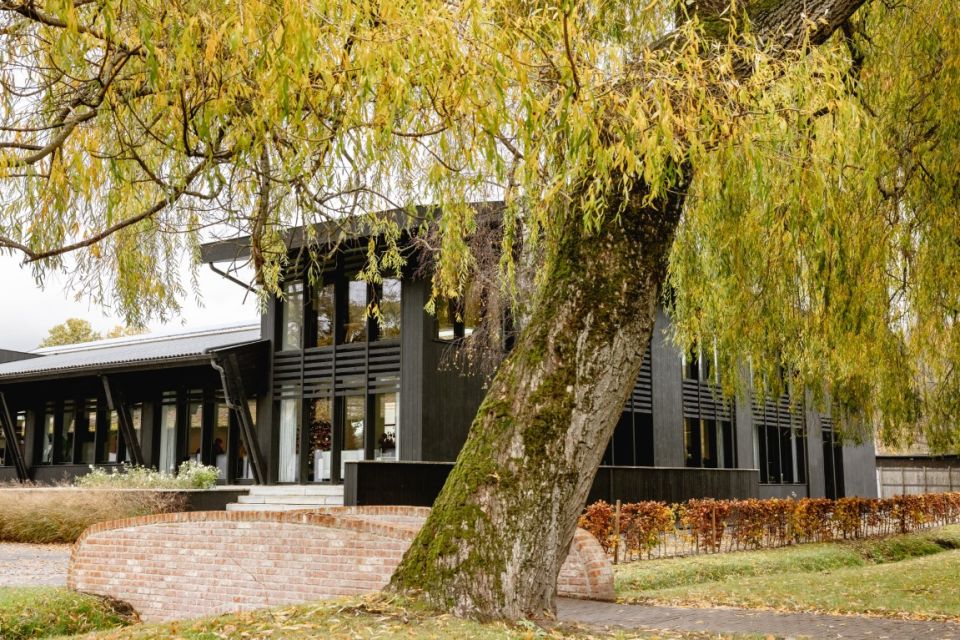
Luc: 'You have to be honest with yourself in life and that also applies to your breeding'
Philip: A realistic view of your breeding has to be the starting point. You will be judged on that sooner or later. Breeding is passion and emotion and yet first and foremost you have to dare to look sober and judge severely.
Luc: that is often the problem with breeders, they look emotionally and not rationally.
Emile: that is also because of hope and that is logical, because you only know after two generations what your mother line offers. Meanwhile, you can dream. And then you may still have a very good mare, if you look at it purely genetically, you always water it down. A yes, the foal is the result of the mother times the father. If it then turns out that the characteristics of the mother predominate, and so you effectively have a good mother, you are 10 years down the road. In my opinion, anyway.
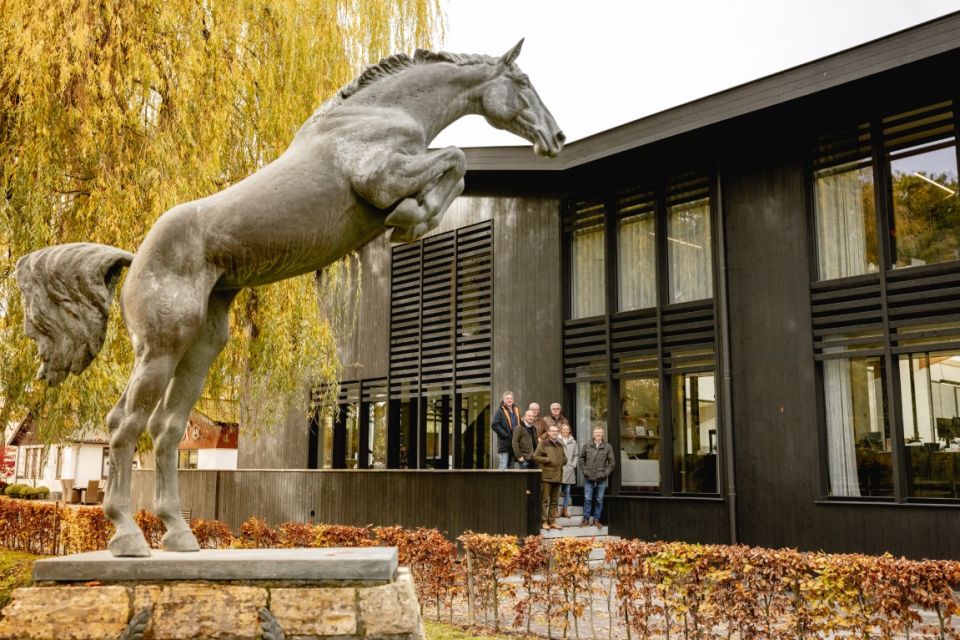
Emile: 'you only know after two generations what your maternal line offers'
Luc: and yet. If you have a mare who jumps with a good attitude and technique, she therefore does not have to jump 1.60m, you still have a greater chance that she passes that on. I bought Ayade de Septon (Wandor van de Mispelaere), who jumped 1.60m with Kevin Staut, when she was 2 years old. Nobody wanted her, she was also small at 1.58m. I bred Cayadix Hero Z (Cadence van 't Gelutt Z) and Ebbadya Hero Z (Erco van 't Roosakker) from her and they both jumped 1.60m. You have to recognize mentality, prudence and blood in your broodmare and then you are fine. And then the pedigree is a good indicator. What did her parents and grandparents and great-grandparents perform? That information doesn't lie. I bought Tic Tac du Seigneur because I could afford him and that was because he was injured in the barn as a two-year-old. Nobody knew what the future held for him. So I bought a young horse with a fat leg and an uncertain future. Why? Look at the pedigree: Clinton x Darco x Heartbreaker. The granddam was the best of her year as a seven-year-old. The dam was almost impossible to ride, but was horribly careful. Tic Tac was certainly not the easiest, but a genius, as was his rider Jérôme Guery. They became Belgian champions here in Lanaken. Ben Maher later jumped the Rio Olympics with it. I don't call that luck.
Emile: I still make mistakes in horses every day and it won't be any different tomorrow. There are simply many factors that play a role and you cannot predict. Kiliana van Klapscheut
(Landor S) is a daughter of Goriana and granddaughter of Coriana, who both jumped 1.60m. My son Geert rode her in the BK for 7 year olds. Day one clear, day two also clear. Stephan Conter wanted to buy them immediately and had a lot of money for them. Kiliana was doing really well and I say we will talk after the final, if you understand me (winks).
Sunday was the final, hurdle one is against the VIP tent and Kiliana jumps not over but through the hurdle. I don't know what possessed her, but she didn't get over the first hurdle in the final. And we never got them competition ready again. And Stephan Conter didn't buy them. The funny thing is that Kiliana became a broodmare afterwards and she gave birth to Odina van Klapscheut (I'm Moerhoeve's Star), among others. Conter did buy that one and later Petronella Andersson won the BK for 7-year-olds with it. In my opinion, mother Kiliana was too sharp. That was a risk in my breeding but now it appears that her children do well. Combine her with Diamant or Dominator Z and you get good horses. She is now expecting a foal by Tangelo vd Zuuthoeve and that is also going to turn out well, I think.
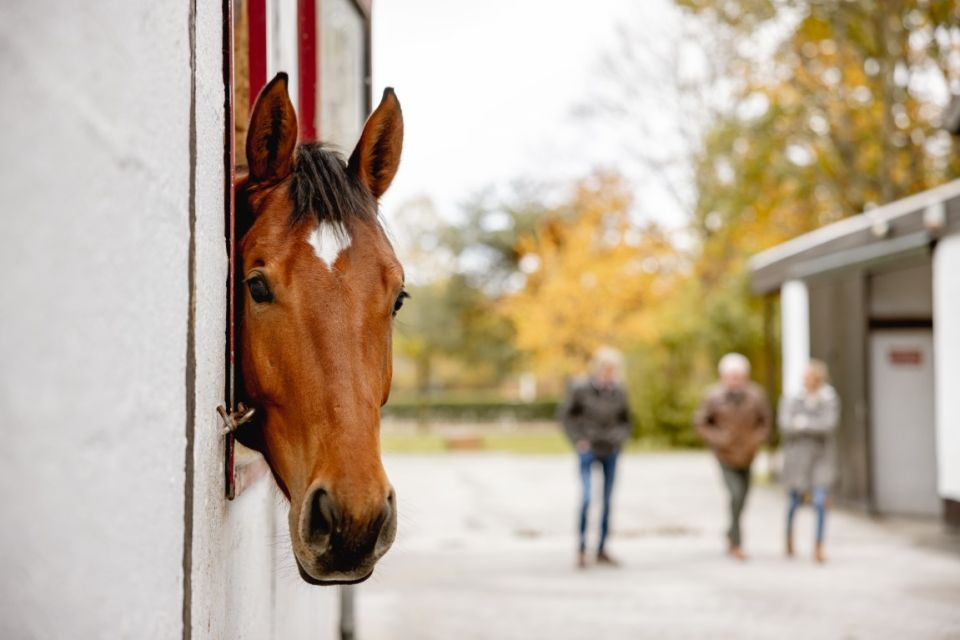
Emile: 'I still mistake horses every day and it will not be different tomorrow'
Rozelien: I understand Emile's philosophy, but I don't take that risk. For me, they don't have to be too sharp. At the end of the day, I have to make them pocket-delicate and train them. I would never dare to breed a horse like Tic Tac du Seigneur. Then you are breeding on the edge of crazy or genius. And if they are crazy, who is going to want to ride them? I don't. I have a daughter of Panama du Seigneur, the dam of Tic Tac, and I would never use Clinton for that. I prefer rather a quiet cool stallion with a lot of power.
Luc: I'd rather have too much than too little blood and caution anyway. And they get 80 to 90% of that from the dam. Look at Odina and her mother Kiliana.
Philip: we also select for our breeding sharp, careful mares that at least have the mentality to stay faultless.
Wim: Don Juan Z was only our mare's second foal. Then you cannot yet estimate what she inherits. We did not consciously play it safe with Dominator Z. We did not know then how he would inherit. Dominator Z just convinced us because of who he is and that worked out well. But honestly, we didn't know that beforehand.
Finally, which cane of which Z stallion may be under your Christmas tree?
Wim: we are now 6 years later and I would choose Dominator again, although Cicero Z van Paemel can also charm us.
Philip: I used to be a fan of Air Jordan Z. Now we have five foals by Dourkhan Hero Z, that speaks for itself surely?
Luc: you really are a breeder who speaks with knowledge (laughs).
Emile: that choice depends on the mare. Dominator Z would fit well with Kiliana. I have also been good in the past with Cicero Z, but as always in breeding you get the faults as well as the qualities. I have also bred with Comme Il Faut and also see something in Comilfo Plus Z. Because our mares are high in blood, we often prefer classic Belgian cool sires with ability.
Luc: I am not allowed to choose Dourkhan Hero Z? Then I'll go for Aganix du Seigneur Z. I think it's clear to everyone what he inherits?
Rozelien: I used Contagio Z this year for the daughter of Panama du Seigneur. Last year I had a very nice foal by Colorit Z. And my experience with Comilfo Plus Z is that he breeds very strongly through. I'm still going to use that one. Although now I have also bred my own licensed stallion, Touch of Grey van de Withoeve (Untouchable). Bred by myself, bred by myself and presented by myself at the stallion show. He was in great demand, but I like him so much that I want to keep him. He has covered 7 mares with us. So I am very curious about the result. And next year I am going to show him at the stallion competition. My first time. That will be exciting. The nice thing is also that he is the fourth generation of the Withoeve and I am proud of that.